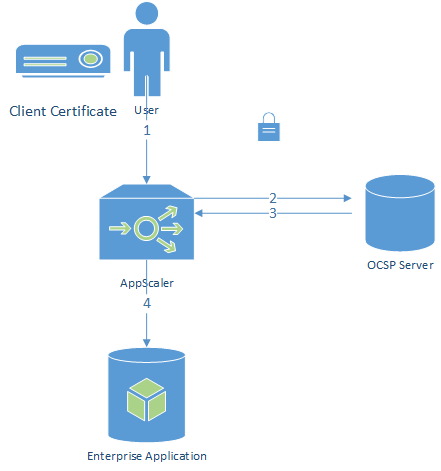Client Certificate Authentication
In typical SSL connection, the client connecting to the server checks the validity of the server by verifying the server’s certificate before the transaction initiated. However, in some situations, the server also needs to authenticate the client (it verifies that you are who you say you are).
Client certificate authentication is a mutual certificate-based authentication, where the client provides its client certificate to the server to prove its identity.

- An HTTP request from the client is received by the AppScaler device and client certificate is required to be installed on client browser
- The OCSP responder verifies whether the client certificate is current
- AppScaler device receives the OCSP check status, if the client certificate is current then the handshake succeeds. Otherwise the handshake fails.
- Grant access to applications
Please click here to view the implementation details